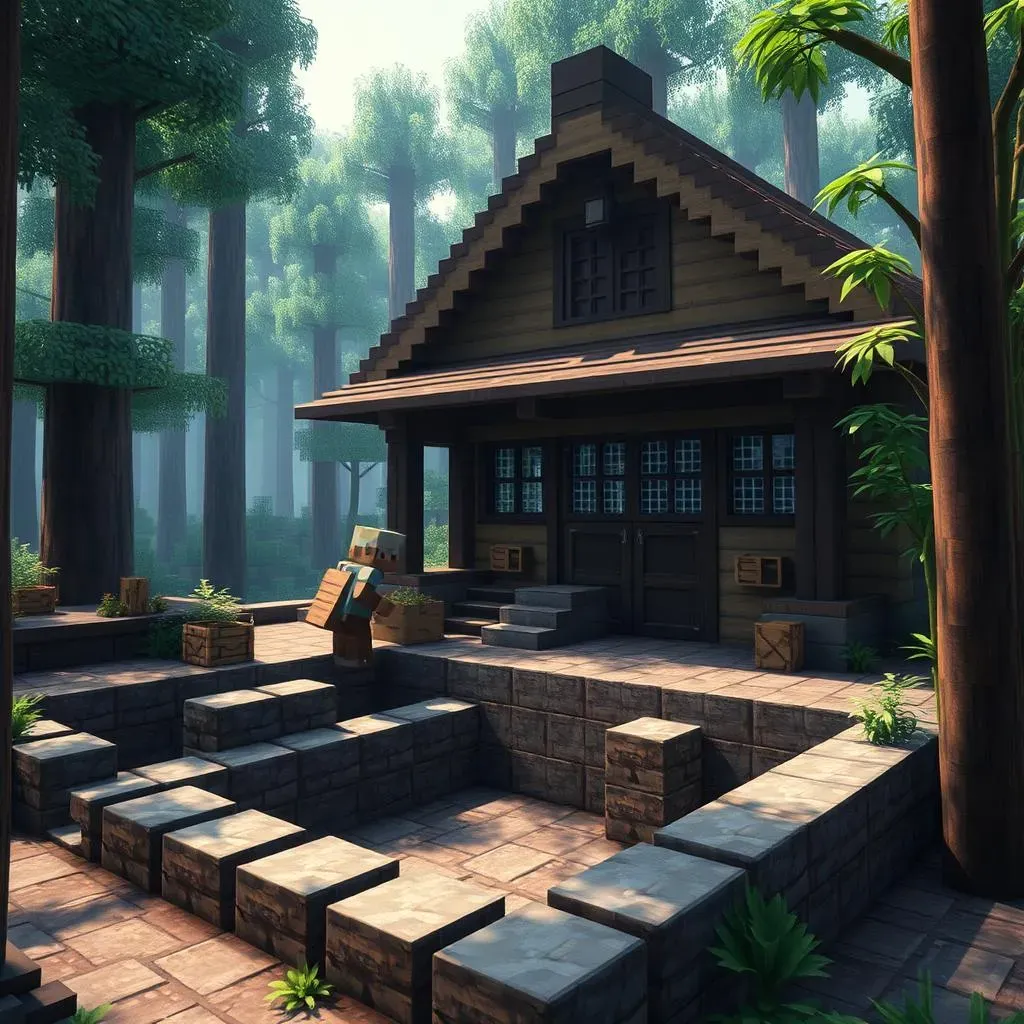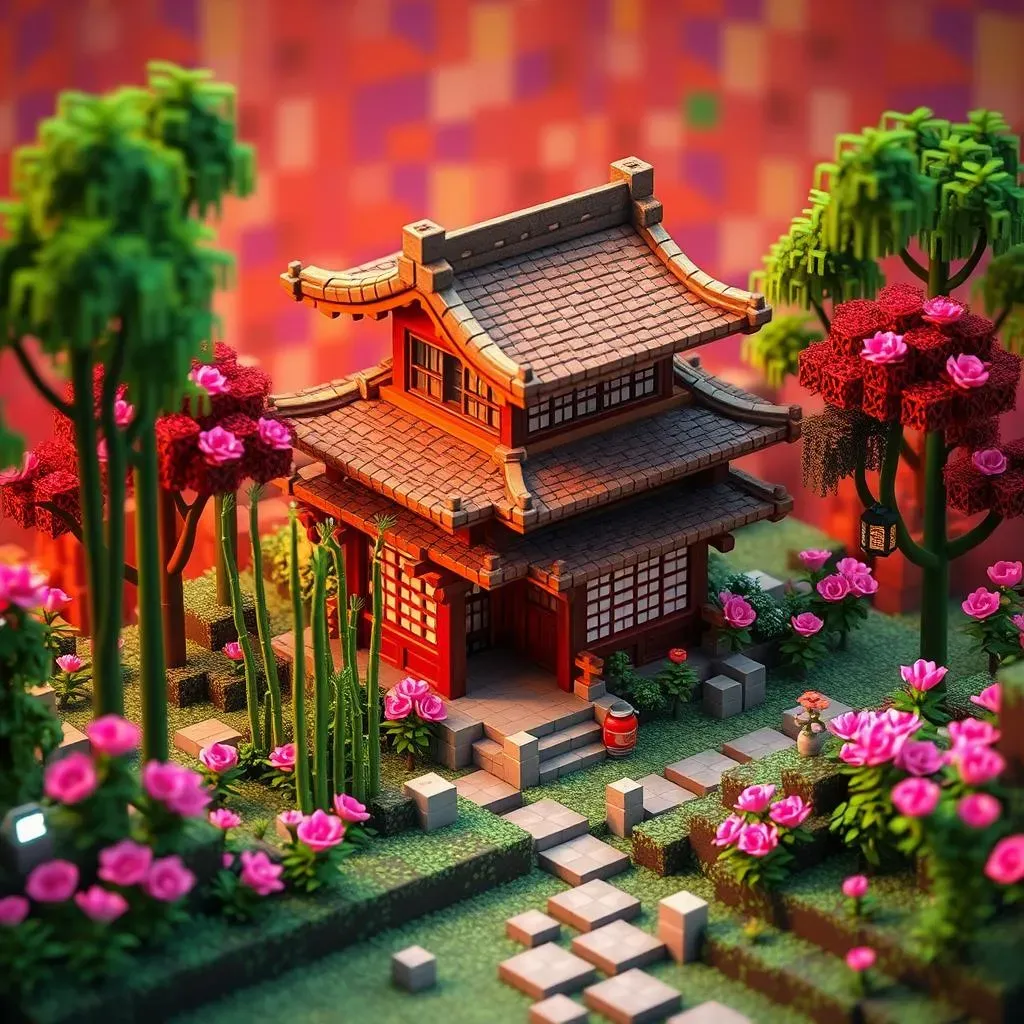Table of Contents
Ever dreamed of building a serene Japanese-style house in your Minecraft survival world? I did too, and let me tell you, it's totally achievable, even if you're not a pro builder. Forget those basic cobblestone boxes; we're talking about crafting something truly special. This isn't just about slapping some blocks together; it's about understanding the core elements of Japanese architecture and translating them into Minecraft. We'll start with smart planning, figuring out what kind of house you want and where it'll sit. Then, we’ll tackle gathering the right materials – and trust me, it's not just about wood and stone. Finally, I'll show you how to add those authentic Japanese touches that'll make your build stand out. I'll guide you step-by-step, making the whole process of building a minecraft japanese house in survival fun and rewarding. Ready to trade your creeper-proof bunker for something a bit more elegant? Let’s get started!
Planning Your Minecraft Japanese House Build in Survival

Planning Your Minecraft Japanese House Build in Survival
Alright, so you're itching to start building a Japanese house, right? Before you even think about placing a single block, let's talk planning. This is where you really set the stage for a build that’s both functional and beautiful. First things first, think about the location. Do you want a serene spot by a lake, a mountaintop dojo, or maybe a cozy village home? The terrain will impact your design, so choose wisely. Then, consider the scale. Are we talking a small, single-story teahouse or a sprawling multi-level mansion? Don't bite off more than you can chew; a smaller, well-executed build is always better than a massive, unfinished one. Also, think about the materials you want to use, and if you can gather them easily in survival, no one wants a house made with cobblestone in the end. Finally, sketch out a rough blueprint. It doesn't have to be a masterpiece, just something to guide you. This step saves you from a lot of headaches down the road.
Planning Step | Consideration |
|---|---|
Location | Terrain, surroundings, overall vibe |
Scale | Size, complexity, time commitment |
Materials | Availability, aesthetics, functionality |
Blueprint | Rough sketch, layout, structure |
Gathering Resources and Laying the Foundation for a Japanese House in Minecraft

Gathering Resources and Laying the Foundation for a Japanese House in Minecraft
Resource Gathering: The Minecraft Scavenger Hunt
Okay, so you’ve got your plan, now it’s time to play Minecraft’s favorite game: the resource grind. For a Japanese house, you’ll want to stray away from the usual cobblestone. Think wood – lots of it. Dark oak is fantastic for that classic look, but spruce and birch can also add nice contrasts. Stripped logs are essential for those clean lines you see in traditional Japanese buildings. Don't forget about clay for terracotta, which is perfect for roofs. If you're aiming for a more luxurious look, consider quartz or smooth sandstone. Stone bricks can also work great for foundations. Bamboo is a must-have if you're going for an authentic build. And don’t forget about glass or panes for those nice Shoji-like windows. The key here is variety – a mix of textures and colors will make your build pop.
Don't just chop down the first tree you see; be strategic. A good tip is to set up a small temporary base near your building site with some chests and crafting tables. This lets you quickly process your materials. Also, think about renewable resources; a small bamboo farm can be a lifesaver. Remember to always keep an eye on your food levels while gathering, you do not want to get caught by a creeper while you are starving. This whole phase is like the warm-up before the main event, so take your time and enjoy the hunt.
Resource | Purpose | Tips for Gathering |
|---|---|---|
Dark Oak Logs | Structure, frames, details | Find dark oak forests, use an axe |
Stripped Logs | Clean lines, modern look | Craft from regular logs |
Clay | Terracotta for roofs | Find near water, smelt in furnace |
Bamboo | Details, decoration | Find in jungle biomes, plantable |
Glass/Panes | Shoji-like windows | Smelt sand, craft into panes |
Laying the Foundation: The Groundwork for Greatness
Once you have your resources, it’s time to lay the groundwork. Start with a solid foundation. A flat, even surface is key for a Japanese house, so don't just build on top of a hill. Clear the area and use stone bricks or smooth stone to create a level platform. This is where your blueprint comes into play; mark out the dimensions of your house and the placement of walls. Don't rush this step; a wonky foundation will mess up everything else. Think about the type of foundation you want. Do you want a raised platform with stairs, or something more grounded? Consider the overall look you're going for. It's like setting the stage for a play; you need a solid base for everything to stand on.
Next, think about the basic structure. In traditional Japanese buildings, posts and beams are super important. Use stripped logs for your posts and planks for your beams. Start with the corners and then fill in the gaps. Keep the spacing consistent; this will make the house look more authentic. Don’t be afraid to experiment with different patterns. At this stage, it’s still easy to tweak things. The foundation is more than just a base; it’s the skeleton of your build. A strong and well-laid foundation will guarantee a sturdy and good looking build.
- Clear the land
- Use stone for a level platform
- Mark out the dimensions
- Build the corner posts
- Fill in the gaps with beams
Adding Authentic Japanese Details to Your Minecraft Survival House

Adding Authentic Japanese Details to Your Minecraft Survival House
Okay, so you've got the basic structure down, which is awesome, but now's the time to make your build scream "Japanese!". It's all in the details, my friend. Let's talk roofs – forget those boring flat tops. Go for a pagoda-style roof with multiple layers using terracotta or dark prismarine. Use stairs and slabs to create that iconic curved shape. And for the love of all that is blocky, add an overhang! It’s not just for looks; it protects the walls from the rain (you know, the Minecraft rain that somehow phases through everything). Then, think about the windows. Shoji screens are a must. Use glass panes and surround them with stripped wood to get that classic look. Don't just slap them anywhere; think about symmetry and balance. And speaking of balance, consider adding a small garden. A few well-placed bamboo shoots, some azalea bushes, and a koi pond can make all the difference. This isn’t just about building a house; it’s about creating a tranquil space.
One of the best ways to add authenticity is by using specific blocks for specific purposes. For example, lanterns are a must. Hang them from the eaves or place them along the pathways. Use trapdoors to create those small, decorative details you see in traditional Japanese architecture. Also, don't forget about the interior. Add tatami mats using light-colored wool or concrete. Keep the furniture simple and functional; less is definitely more. The point here is to create a peaceful atmosphere, not a cluttered mess. And hey, if you're feeling really fancy, you can add a small shrine or a tea room. It's your world, so have fun with it! The goal is to create a space that’s not just a house, but a home that's a reflection of Japanese design.
Detail | Minecraft Block/Item | Tips |
|---|---|---|
Pagoda Roof | Terracotta/Dark Prismarine, Stairs, Slabs | Use layers, add overhangs |
Shoji Windows | Glass Panes, Stripped Wood | Frame symmetrically |
Gardens | Bamboo, Azalea, Water, Lily Pads | Use sparingly, create balance |
Lanterns | Lanterns/Torches | Hang from eaves, along pathways |
Tatami Mats | Light Wool/Concrete | Use for flooring |
